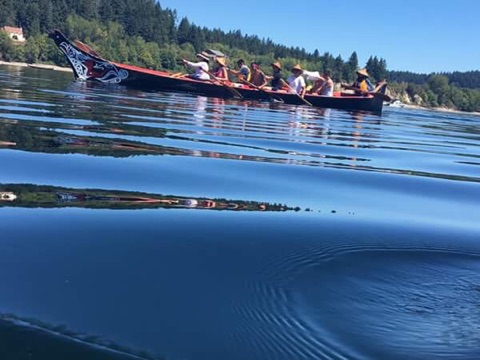News & Events
January 21, 2015
Book Review – Indigenous Languages
Vanishing Languages: The Extinction of the World’s Languages. By Daniel Nettle & Suzanne Romaine. New York: Oxford University Press, 2000.
The Last Speakers: The Quest to Save the World’s Most Endangered Languages. By K. David Harrison. Washington, D.C.: National Geographic, 2010.
Vanishing-VoicesThese two books, published ten years apart, present narratives on how and why 90 percent of the planet’s 6,000 or so languages are becoming endangered and extinct. Two thousand of these languages have fewer than 1,000 speakers. More importantly, authors Nettle, Romaine, and Harrison explain why it is important to keep the world’s languages alive and thriving. Languages are repositories of the unique human experiences and values embodied in culture, as well as storehouses of intimate knowledge of the natural environment—of species and phenomenon unknown or undocumented by Western science. The authors make strong arguments for the importance of valuing and harnessing indigenous knowledge, ideally through keeping indigenous languages alive, and at the least through documenting the stories, histories and conversations of fluent speakers.
The authors present compelling evidence on the relationship and overlap between areas of linguistic diversity and biologic diversity. Many of these areas of bio-linguistic diversity are the traditional—and embattled—homelands of much of the world’s indigenous populations. Colonialism and economic exploitation have decimated and continue to decimate both biological species and native peoples and languages through destruction of the environment.
Vanishing Voices is slightly technical, while The Last Speakers reads like a National Geographic travelogue. But, both books have strong socio-political undertones that make it easy for the reader to connect the science of linguistics to history and current events. In short, they’re “easy reads,” particularly The Last Speakers.
Both books draw upon the many varied Native American experiences as examples of physical and cultural genocide as well as the current growing movement toward cultural and linguistic revival. The cover of Vanishing Voices features Ishi, the “last survivor” of the Yahi Indian Tribe of Northern California, who died in 1916. The Last Speakers features several last speakers, including Johnny Hill, Jr., the youngest fluent speaker of the Chemehuevi language of Arizona.
Native American language retention and revival strategies reflect the tribal diversity found in North America. Despite centuries of oppression and forced assimilation, surviving Native languages have shown resiliency against all odds. Navajo, with nearly 150,000 speakers, is the largest indigenous language in the U.S., and there are Navajo language classes and radio stations to augment the spoken language used in many Navajo families. Other tribes, like the Hopi with 7,000 speakers, view their language as a gift only to be spoken among Hopi. The tribe recently scotched plans to teach Hopi in a class that had other Native, but non-Hopi children. The intense sense of ownership exhibited by the Hopi might ensure the survival of the language this century, despite the small number of speakers: Integral to being Hopi is being able to speak Hopi. Other Native American “language warriors” are using modern technology, including Facebook and texting media as well as rap music, to propagate and popularize indigenous languages among younger tribal members.
Both books also provide instructive examples from other, non-North American indigenous cultures. Very relevant to IWRI’s international connections are sections on language immersion and revitalization programs that have gained traction in Hawai’i and New Zealand. Additional sections detail how stories and oral histories told by elderly Australian Aboriginal speakers are being recorded before they take their languages to the grave with them. Ninety percent of the 250 or so Australian Aboriginal languages are nearly extinct, and only 18 of them have 500 or more speakers.
While the worldwide situation of keeping language diversity alive is dire, the growing awareness of the deep connections between environmental preservation and cultural maintenance bring a glimmer of hope that endangered and even extinct languages will be saved or revived for a new generation of proud indigenous peoples around the world.




